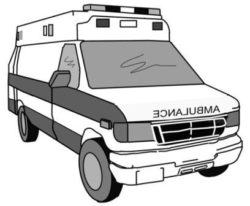NHTSA and the Emergency Medical Services (EMS) community have taken a step forward by completing a long-awaited set of EMS best practices for transporting children in ground ambulances. A draft was issued in mid-2010, as reported in July/August 2010 issue of SRN, and was followed by a public meeting later that year. The final report varies little from the draft.
Though recent crash data do not show children having been injured in ambulances, a review of current practices reveals that the risks are very real because an estimated 1,000 ambulance crashes per year “involve pediatric patients.” Approximately 620,000 children per year ride in ambulances while improperly restrained. The goals of the project are to make agency guidelines uniform across the country and to enable emergency transporters to reduce the number of children who ride in an unsafe manner.
The recommendations provide ideal practices—and the best alternatives if the ideal “is not practical or achievable”—for five situations:
- Situation 1: Child injured/not ill
- Situation 2: Child ill and/or injured, but condition doesn’t require intensive monitoring or intervention
- Situation 3: Child’s condition does require continuous monitoring and/or intervention
- Situation 4: Child requires spinal immobilization or must lie flat
- Situation 5: Uninjured child requires transport with a patient
Included in the report are appendices detailing the previously developed specifics of selecting and securing a CR on a patient transport cot. The recommendations do not cover practices related to air ambulances, transport of children with special needs, or newborns needing inter-hospital transport, all of which the report recognizes as deserving future attention.
The recommendations were developed by a working group of experts from government agencies and organizations concerned with child safety in ambulances, including developmental pediatrician Marilyn Bull, MD, FAAP, a member of the SRN editorial board. The only earlier guidance on this topic was a document from 1999 (included in the Appendix, p. 307, of the current National Child Passenger Safety Certification Training Program) that contains only very basic “dos and don’ts” for transporters.

